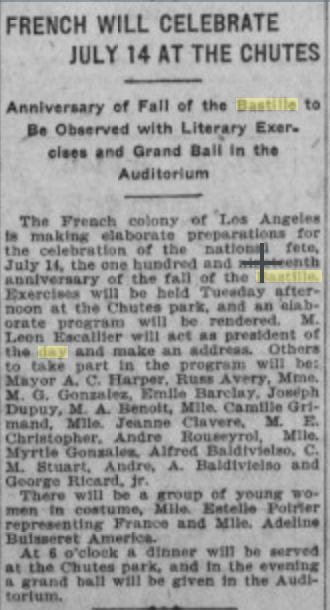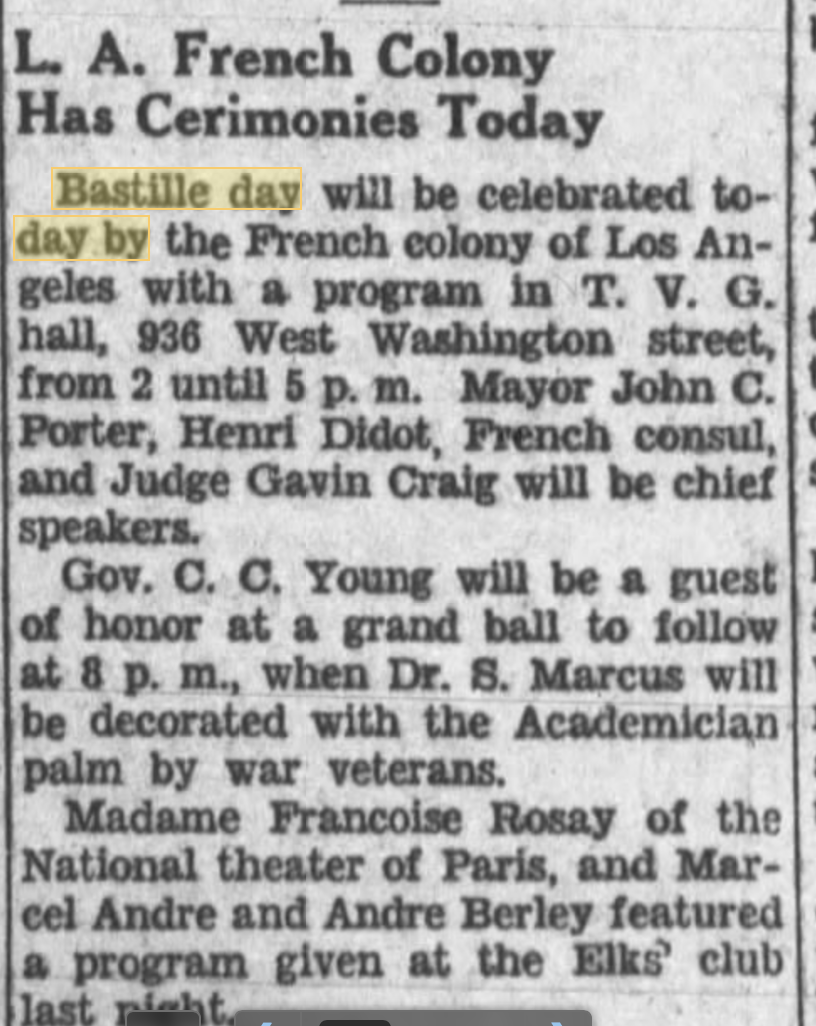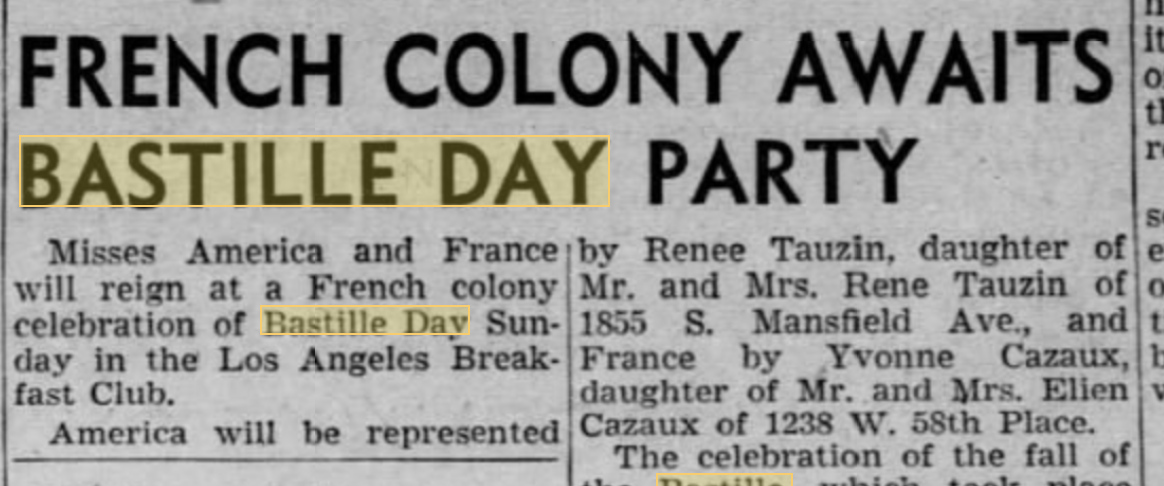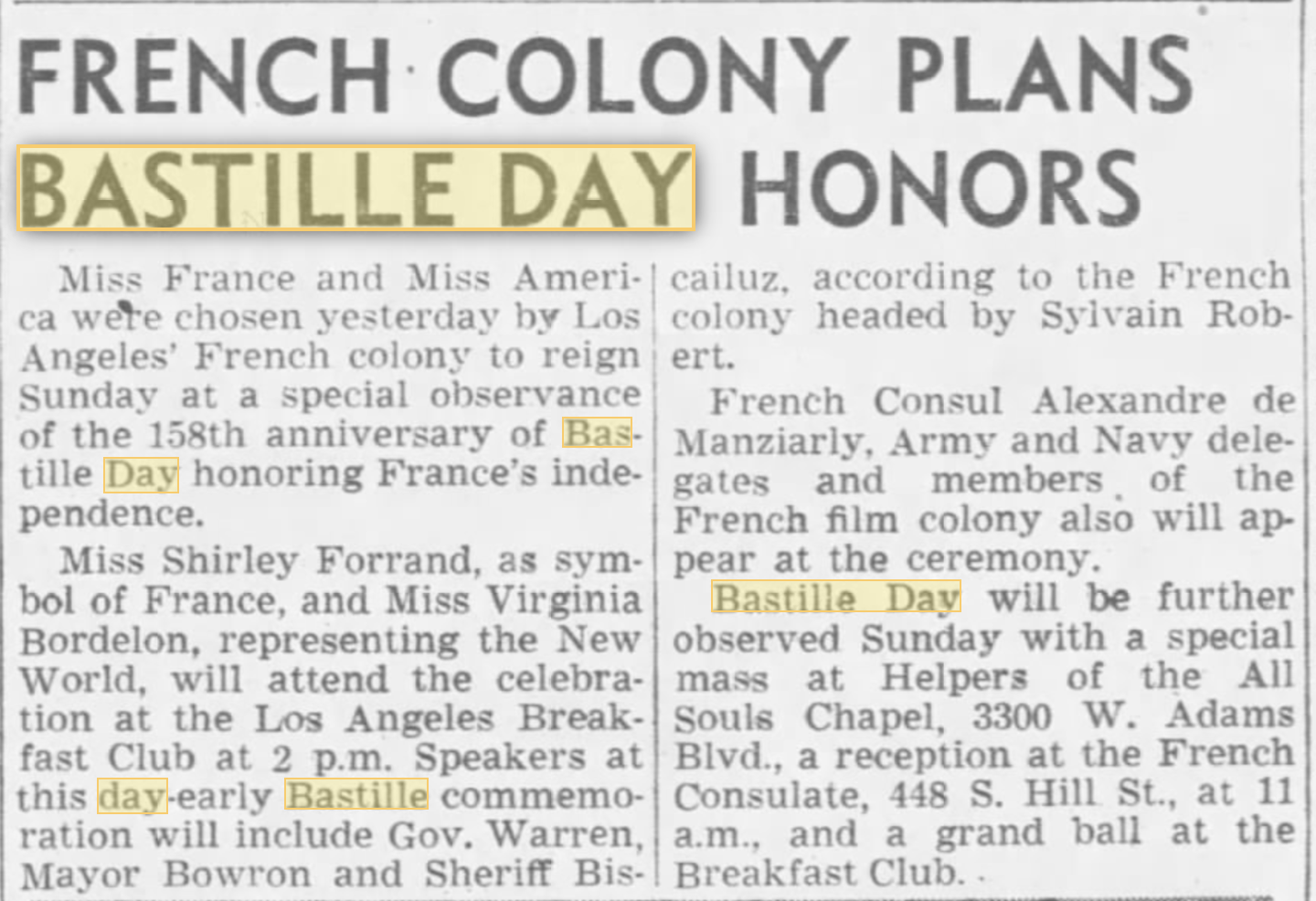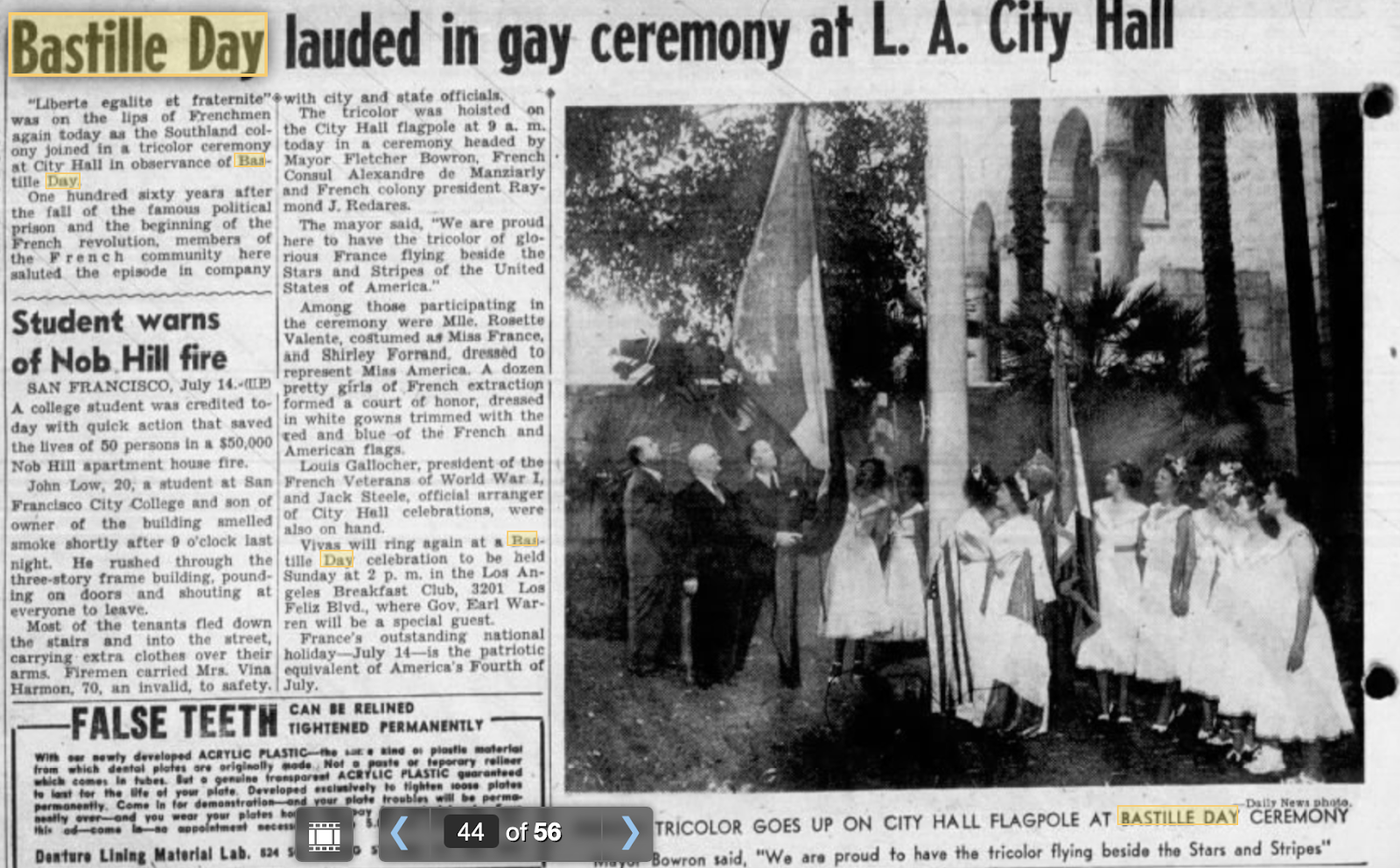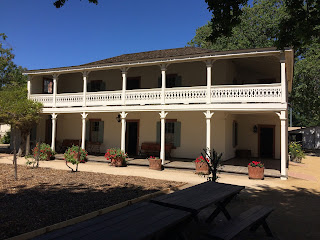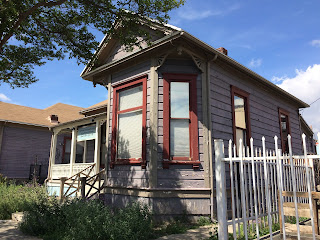Updated to add:
I want our stories told, for better or for worse.
That said, a rather unpleasant character has tried to fight me, in the comments of my own blog, on the subject of Miguel Leonis.
This individual rudely ignored several requests to identify themselves and provide citations for the "facts" they wished to provide.
If I am incorrect, by all means email me (losfrangeles at gmail dot com). However, I will ask you to identify yourself, identify any credentials you cite, and cite exact sources so I can double-check them myself.
I'm not stupid.
Michel "Don Miguel" Leonis, date unknown
I’m not going to mince words. Michel Leonis, a six-foot-four-inch, 220-pound French Basque dubbed “Don Miguel” out of fear rather than respect, was a human stain.
No one can say for sure why Leonis left France's Basque region for California. Some sources say that he was a smuggler wanted by both the French AND Spanish authorities. Others say that his penchant for illegal activity back in France shamed his powerful family so much that his father demanded he leave. We may never know the truth, but either way, he was not one of the good guys.
When he arrived in 1854, Leonis worked as a foreman on Rancho El Escorpion in the western San Fernando Valley. Some say that he was illiterate and only spoke Basque; others say he could manage limited amounts of Spanish and English. (His friendships with George Le Mesnager and Joseph Mascarel suggest that he could, at bare minimum, converse in French.)
Interestingly, Woodland Hills' continuation school was formerly called Miguel Leonis High School (it closed in 2015). But regardless of how educated Don Miguel might have been, within a few years he’d bought out his employer’s half of the rancho.
The other half of the rancho belonged to a Chumash widow named Espiritu Chijulla Menendez.
You know where this is going, right?
Espíritu Chijulla Leonis
Leonis married Espiritu in 1859, took over her half of the rancho, raised sheep on it…and added to his land holdings many times over through threats, violence, and nuisance lawsuits. He was dubbed the “King of Calabasas”, but he owned or controlled most of the western San Fernando Valley and part of Ventura County. He also had a house and orchard downtown (he may have kept a mistress there) - the Aliso Village apartments now stand on the site. He confided in the few people he was close to that he wanted to build his own empire that could last forever.
This is the Leonis adobe. Humble home for a man who dreamed of an empire.
The house was old and abandoned when Leonis stumbled upon it one day. He fixed it up, enclosed the back staircase, added the veranda...and never, EVER allowed Juan Menendez, Espiritu's son from her first marriage, inside the house. Instead, Leonis relegated young Juan to the barn.
Leonis had more than 100 employees, including Chumash and Mexican vaqueros whose sole responsibility was to scare off homesteaders who got too close to his property. One dispute resulted in a two-week standoff and culminated in a murder. His own employees were terrified of him.
At one point, Leonis even tried to force the Garnier brothers, who owned Rancho Los Encinos (modern-day Encino/Sherman Oaks), off of their property. Eugene Garnier testified in court that Leonis' vaqueros had burned their newly planted wheat fields and beaten their employees. He also stated that he was testifying against Leonis only because he was forced to do so. It's not a coincidence that Eugene moved back to France (but we'll get to that when I get to the Garnier brothers).
When intimidation didn’t work, Leonis used the court system. He was a plaintiff in at least thirty property disputes. Just to put that into perspective, fewer than 4,000 people lived in all of LA County - which still included Orange County - in 1860. Leonis managed to sue at least thirty of them. And he wasn’t above bribing judges and juries with food and alcohol.
Marcelina Leonis, date unknown
Leonis did have one Achilles' heel - his daughter Marcelina, born in 1860 and named after Espiritu's aunt. Curiously, in spite of marrying her mother out of convenience, Leonis doted on his daughter and always gave her the best of everything. Marcelina received a better education than either of her parents did, and loved to play the piano. The few available resources on Marcelina state that unlike her father, she adored her mother and her older half-brother. But Marcelina’s life was cut short by smallpox when she was only twenty. For three days after Marcelina’s death, Leonis drank heavily - well, more heavily than usual.
One story states that after losing Marcelina, Leonis attempted to hang himself from a tree behind the adobe, using his horse as a hanging platform. But the horse stubbornly refused to budge. Only when Leonis dismounted did the horse bolt. Leonis was so angry that he allegedly cut off the tree branch from which he'd tried to hang himself.
You’d think that suddenly losing his only child might have prompted Leonis to rethink some of his life choices. But it didn’t.
In September of 1889, Leonis won his first court case since Marcelina’s death. He celebrated his victory in the saloons downtown before heading back to Calabasas. And got himself into what must be the earliest drunk-driving accident in Southern California history.
Somewhere in the Cahuenga Pass, Leonis fell out of his wagon, and its heavy wheels ran right over his face and chest. He was taken to a (coincidentally French-owned) roadhouse on the Valley side of the pass. After three days of agony, the man who had terrorized the western Valley was dead. He was buried at Calvary Cemetery next to Marcelina.
The very next day, Juan finally moved into his mother's house.
You’d think that would be the end of it. But several years earlier, Leonis had hidden the nastiest trick of all up his sleeve.
Leonis married Espiritu for her family’s land, then proceeded to treat her like the help instead of his wife for the next thirty years. He was the third richest person in California when he died. Yet, he left Espiritu a pittance of $5,000, willing the rest of his money and land to his siblings. Adding insult to injury, he referred to Espiritu as his housekeeper, denied that they had ever been married, and left the money with the caveat that she would only get it if she didn’t contest the remainder of the will.
Espiritu wasn’t well educated, but she wasn’t stupid. And she had suffered enough. She hired the best attorneys in town - Horace Bell and Stephen Mallory White, who had previously represented Miguel in some of his lawsuits.
For five weeks, the case dragged out in court. Witness after witness swore to the court that Leonis and Espiritu either were or weren't married. Espiritu's name was dragged through the mud again and again. One witness even claimed that she had never been married to her first husband and had lived with two other men (an extremely scandalous accusation for the time). Poor Marcelina's headstone was even submitted as evidence. The jury deliberated for less than a day before legally awarding Espiritu the widow’s share of her husband’s estate.
The Los Angeles Times, which had gleefully covered Espiritu's court case in all of its ugly detail, published a (likely falsified) story of Espiritu marrying an 18-year-old man with some extremely salty commentary I won't repeat here.
Espiritu had to fight for her house in court again and again for the next 15 years (early LA had plenty of shady characters more than willing to swindle a two-time widow out of her own house), but she won her final case in 1906, and died a few months later. Juan and his family inherited the house (take THAT, Miguel). Espiritu is buried at Mission San Fernando (where she was born and educated). Should you wish to pay your respects, do note that she is interred under her first married name, Menendez.
Mere months before he died, Leonis wrote to his nephew, Jean Baptiste Leonis, asking him to come to California and eventually take over his estate. It didn’t quite work out that way, but by the time J.B. died, he’d established an empire of his own - in addition to one of California’s strangest cities. More on that in a future entry.
P.S. The aforementioned troll tried to convince me that Leonis was a good man, alleging that he was kind to children. First of all, there are many documented cases of black-hat individuals being kind to at least one child, so that's not enough to convince me. Second, the troll rudely refused my request to cite a source for this.
Good men DO NOT torch their neighbors' crops.
Good men DO NOT intimidate their neighbors or get their workers to beat up someone else's workers.
Good men DO NOT marry a widow just to gain control of her estate.
And good men most assuredly DO NOT disinherit their own widows, claiming they were never married.
I don't believe Leonis was a truly good person. If you want to convince me otherwise, show me REAL PROOF and give me an AIRTIGHT explanation for how he treated Espiritu - who owned half of Rancho El Escorpion in her own right before Miguel ever heard of Calabasas.






